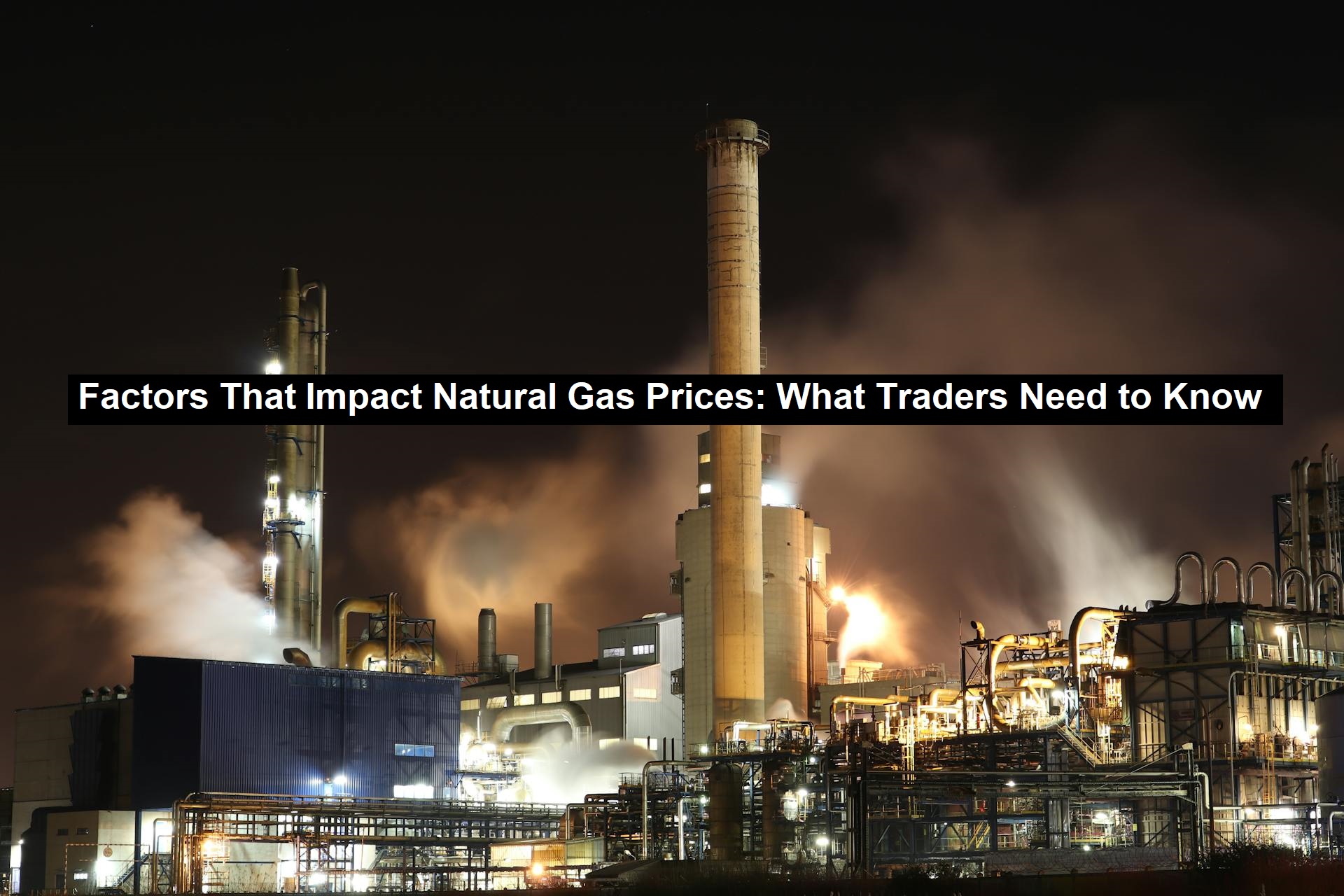Factors That Impact Natural Gas Prices: What Traders Need to Know
Natural gas is a crucial component of the global energy landscape, serving as a primary source of fuel for electricity generation, heating, and various industrial processes. For traders, understanding the factors that influence natural gas prices is essential for making informed decisions. This article delves into the complex dynamics affecting natural gas prices, providing insights into the key drivers that traders should be aware of.
Supply and Demand Dynamics
The production of natural gas is a central factor in determining its price. Major producers, such as the United States, Russia, and Qatar, play a significant role in the global market. Advances in extraction technologies, such as hydraulic fracturing (fracking) and horizontal drilling, have dramatically increased production levels, particularly in the U.S. shale regions. These technologies have enabled access to previously unreachable reserves, leading to a surge in supply. Consequently, increased production often puts downward pressure on prices. However, production levels are subject to fluctuations due to operational challenges, regulatory changes, and environmental considerations.
Natural gas consumption varies across different sectors and regions, influencing its market value. In the electricity generation sector, natural gas is often favoured for its lower emissions compared to coal. Industrial uses, including manufacturing and chemical production, also contribute significantly to demand. Residential heating needs can cause seasonal spikes in consumption, particularly during winter months in colder climates. Such seasonal variations can lead to significant price fluctuations. Understanding these consumption patterns helps traders anticipate periods of high demand and adjust their strategies accordingly. To get started, view more here.
Geopolitical Factors
Geopolitical events in major natural gas-producing regions can have profound effects on global prices. Political instability or conflicts in countries like Russia, Venezuela, or the Middle East can disrupt supply chains and create uncertainty in the market. Such disruptions often lead to price spikes as traders react to potential shortages. For example, sanctions or conflicts affecting Russia, one of the world’s largest natural gas exporters, can significantly impact global supply and, consequently, prices. Fluctuating natural gas prices can present both challenges and opportunities for entrepreneurs, influencing the viability of certain small business ideas, particularly those related to energy production, transportation, and consumption. Understanding the political landscape of producing regions is crucial for anticipating how geopolitical events might influence natural gas markets.
Trade policies and international agreements also impact natural gas prices. Trade agreements that facilitate the export and import of natural gas can influence market dynamics by altering supply routes and prices. Tariffs and trade barriers can restrict the flow of natural gas between countries, affecting availability and pricing. For instance, changes in U.S. trade policies or new agreements between major producers and consumers can shift market balances and impact price trends. Traders need to stay informed about these policy changes to anticipate their effects on the market.
Economic Indicators
Economic growth directly affects natural gas demand. During periods of economic expansion, industrial production and energy consumption generally increase, driving up demand for natural gas. Advanced authorization for natural gas imports can help mitigate the risk of price volatility and ensure a stable supply for domestic consumers. Conversely, economic downturns can lead to reduced industrial activity and lower demand. Analysing economic indicators such as GDP growth, industrial output, and manufacturing activity can provide valuable insights into potential changes in natural gas prices. Traders use these indicators to gauge the overall health of the economy and its impact on natural gas markets.
The value of currencies, particularly the U.S. dollar, plays a significant role in determining natural gas prices. Since natural gas is traded globally and often priced in dollars, fluctuations in the exchange rate can affect the cost of natural gas for international buyers. A stronger U.S. dollar makes natural gas more expensive for buyers using other currencies, potentially reducing demand and impacting prices. Conversely, a weaker dollar can make natural gas more affordable and stimulate demand. Traders must consider exchange rate trends when analysing natural gas prices.
Read: Know How to Successfully Secure Your Funding Round
Weather and Environmental Factors
Weather conditions have a direct impact on natural gas prices. Extreme weather events, such as hurricanes or severe cold spells, can disrupt production and transportation infrastructure, leading to supply shortages and price increases. Harnessing futures contracts allows energy producers and consumers to hedge against volatile natural gas market price fluctuations, ensuring greater price stability and mitigating potential losses. Seasonal weather patterns also influence demand, with colder winters increasing residential heating needs and driving up consumption. Traders monitor weather forecasts and historical weather data to anticipate potential disruptions and adjust their trading strategies accordingly.
Environmental regulations aimed at reducing carbon emissions can affect natural gas production and consumption. Policies promoting cleaner energy sources or imposing stricter emissions standards can influence the demand for natural gas. For example, regulations encouraging the use of renewable energy sources might reduce reliance on natural gas for electricity generation. Conversely, initiatives to reduce emissions from coal-fired plants may increase the demand for natural gas as a cleaner alternative. Traders need to stay informed about environmental policies and their potential impact on natural gas markets.
Conclusion
Natural gas prices are influenced by a complex interplay of factors, including supply and demand dynamics, geopolitical events, economic indicators, weather patterns, environmental regulations, market sentiment, and technological developments. For traders, staying informed about these factors and understanding their impact on natural gas prices is crucial for making strategic decisions.

